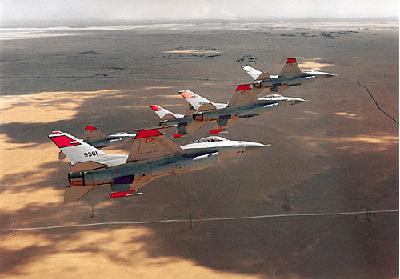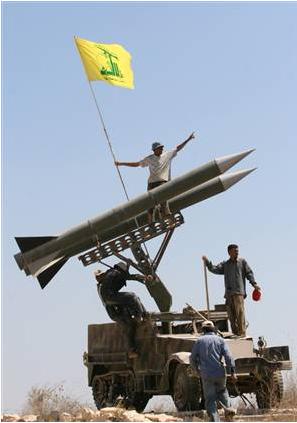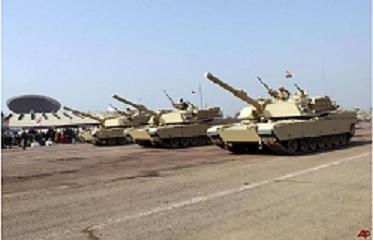On May 19, 2011 U.S. President Obama presented his vision of a two-state solution, stating, “The borders of Israel and Palestine should be based on the 1967 lines with mutually agreed swaps, so that secure and recognized borders are established for both states.” What struck many as simply a restatement of official American policy, provoked Israeli Prime Minister Benjamin Netanyahu to respond “Israel will not return to the indefensible lines of 1967.” Some questioned the Israeli Prime Minister, recalling that Israel successfully defended itself against Arab aggression in 1948 and 1967 from those lines. But in the 44 years that have elapsed from 1967, there have been substantial changes that directly bear upon Israel’s defensibility behind the lines that existed prior to the 1967 Six-Day War.
Many Saw President Obama’s Statement as a Major Shift in American Policy
Before exploring these factors, it is important to identify how President Obama’s statement reflects a change in American policy. Prior agreements between Israel and the United States operated on the principle that Israel would cede territory incrementally with the endpoint approaching the 1967 lines but allowing for adjustments to accommodate vital Israeli security requirements. The transfer of territory to Palestinian control was tied to the Palestinian Arabs upholding the tenets of the peace process, including ending incitement against Israel, acting against terrorists and accepting Israel’s right to exist. Many interpreted President Obama’s speech as reversing the order, establishing the pre-1967 lines as the default starting point of negotiations, rather than the approximate end point of the process.
Syndicated columnist Charles Krauthammer, a critic of the president’s policy, explained the significance of this change in The Washington Post (“What Obama did to Israel,” May 26, 2011). Krauthammer wrote that President Obama
declared that the Arab-Israeli conflict should indeed be resolved along “the 1967 lines with mutually agreed swaps.”
Nothing new here, said Obama three days later. “By definition, it means that the parties themselves Israelis and Palestinians will negotiate a border that is different” from 1967.
It means nothing of the sort. “Mutually” means both parties have to agree. And if one side doesn’t? Then, by definition, you’re back to the 1967 lines.
In his response to President Obama’s raising the pre-1967 lines, Prime Minister Netanyahu reminded listeners that Israel’s main population and industrial centers would be reduced to a coastal strip of land only nine miles wide at its narrowest point. Netanyahu also reasserted that Israel needed to maintain a military presence along the Jordan River. The prime minister did not provide a detailed explanation of the Israeli requirements.
An Israeli General’s Military Assessment
In 2005, Israeli Major General Yaacov Amidror elaborated in detail on the extreme, if not insurmountable, challenges to Israel of returning to boundaries approximating the 1967 lines (a five minute
video by the Jerusalem Center for Public Affairs graphically portrays the issues). In “
Israel’s Requirement for Defensible Borders,” Amidror explained that all Israel’s military commanders believe
there is no possibility of defending Israel from within the 1967 lines in case of war, and certainly not against a modern army equipped with precision weapons. No responsible leader can promise that Israel will not have to face such a threat in the future …. There is a necessity for sufficient depth for the reserve forces to mass and for adequate space before enemy forces reach the strategic interior.
This was also the judgement of former Chairman of the Joint Chiefs of Staff for the United States Armed Forces, Earl Wheeler. In a memorandum on June 29, 1967, just weeks after the Israeli victory in the Six Day War, Wheeler wrote:
From a strictly military point of view, Israel would require the retention of some captured Arab territory in order to provide militarily defensible borders. [In the West Bank] Israel should control the prominent high ground running north-south.
After the 1973 Yom Kippur War, a review of Israel’s minimum requirements for defensible borders by U.S. Army Colonel Irving Kett reached the same conclusions. A military presence in the Jordan River Valley, a natural tank trap because of its low lying terrain and few roads running west, needed to be retained along with the West Bank high country. Israel’s vulnerable coastal strip also needed to be widened. The high expectations of the Oslo accords caused some to question the need to adhere to this doctrine.
In 2005, Amidror reflected on Wheeler’s memorandum:
Nearly forty years have passed since the Joint Chiefs of Staff prepared their memorandum for the Johnson administration…Clearly, the geography and topography have not changed, and military technology has not negated their conclusions, either. Indeed, there have been significant developments in the size, quality, and structure of the armed forces of the Arab states surrounding Israel that makes the analysis of the Joint Chiefs of Staff even more compelling today:
-
Back in 1967, most Middle Eastern armies were made up of relatively slow infantry formations. Today, Middle Eastern armies are structured around highly mobile armored and mechanized formations that can fight continuously over much longer stretches of time…
-
The range of effective fire has also grown with the advent of new military technologies. This is true with respect to defensive weapons, such as anti-tank missiles, as well as offensive weapons, including ae
rial-delivered and artillery projectiles… This is also why the minimal defensive depth that the U.S. Army has defined as necessary for its own divisions has almost doubled in recent years.
-
Precision-guided weapons will become a dominant factor for both sides on the battlefield in the future. As long as such weaponry was in Israeli hands alone, this clear-cut advantage in military technology enabled the Israel Defense Forces to cope with inferior conditions on the ground, such as disadvantageous terrain or inadequate depth. But when Israel’s adversaries also possess precision-guided weapons, then defensible borders become an absolute necessity for which there is no possible substitute.
If Israel does not control the defensive line proposed by U.S. planners, the Israel Defense Forces will pay a steep or impossible price in the event of war… The opportunities to disperse Israeli defensive assets that might become the targets of an adversary’s precision-guided munitions would be extremely limited.
Amidror factored in the substantial military build-up by Arab states over the past four decades. This build-up is unprecedented in both the quantity of armaments and the upgraded capabilities.
Unprecedented Increase in All Forms of Weapons
In 1967 the Arab states that participated in the war, Egypt, Syria, Jordan, and Iraq, possessed a combined 2000 tanks, 700 combat aircraft and 1500 artillery pieces. They fielded armies comprising approximately 550,000 troops against Israel (A.J. Walker, Arab-Israeli Wars).
Fast-forward 44 years. A
study by the Washington, D.C.-based Center for Strategic and International Studies (CSIS) published in early 2011 calculated the following force and armament levels for the current Arab “frontline states” in any war with Israel.
|
country
|
Active troops
|
Tanks
|
Combat aircraft
|
Artillery
|
|
Egypt
|
468,000
|
3,723
|
461
|
1,952
|
|
Syria
|
325,000
|
4,950
|
555
|
3,030
|
|
Jordan
|
100,500
|
1,223
|
102
|
453
|
|
Lebanon
|
59,000
|
336
|
|
182
|
|
Total frontline
|
942,500
|
10,222
|
1,118
|
5,617
|
A review of this selected list of armaments reveals that the CSIS-defined frontline states possess up to five times more tanks than the participants in 1967. Along with the dramatic increase in tanks, they have added several thousand lighter armored fighting vehicles. The number of aircraft has increased substantially. In addition to the fix-winged aircraft several hundred ground attack helicopters have been added to Arab arsenals. These states also possess nearly four times as many artillery pieces as they did in 1967.

On top of those figures, Saudi Arabia and Persian Gulf states have used their oil wealth to purchase large arsenals of advanced weaponry which could be supplied to the frontline states to make up for combat losses. And there is no slowdown in sight in their accelerated pace of arming. The United States in 2010 recommended a
$60 billion deal to supply new military aircraft to Saudi Arabia, a figure that dwarfs the spending of any other country in the region, including Israel.
To grasp the scope of the contemporary Arab arsenal in sheer numbers, the armaments possessed by the frontline Arab states are on par with the arms amassed by German forces in June 1941 for its assault against the world’s largest country, the Soviet Union. The 10,000 modern tanks of the combined frontline Arab forces are three times the 3,350 tanks assembled by Germany at the start of it invasion of the Soviet Union. It is worth recalling that the Soviet Union was able to withstand the massive assault only because of its vast strategic depth, which bought Moscow time and space to rebuild its forces.
Qualitative Advances
Along with the vast numerical increases in weapons, the mobility and lethality of these weapons have also improved. By joint agreement, Egypt has co-produced more than 1000 of the United States’s premier M-1 Abrams battle tank. These tanks can travel at higher speeds than older models and along with the lighter vehicles give the Arab ground forces greater mobility to seize territory.
Both Egypt and Jordan have stocked their air forces with advanced American models, i
ncluding F-15s. Egypt and Syria also possess substantial fleets of ground attack helicopters which have proven to be highly effective supplements to support ground forces and attack armored units.
Addressing the assertion that “the advent of ballistic missiles has made the entire discussion about defensible borders irrelevant.” Amidror argues that the value of territory has actually increased as a result of the introduction of ground missiles to the Arab arsenal. He writes:
In the face of such a threat, the dispersal of infrastructure installations and weapons systems, as well as command and control mechanisms, becomes critical… Missile defenses can blunt a missile attack, but cannot be relied upon to provide completely hermetic protection, especially if the size of the initial attack is considerable. Moreover, in the event of a nuclear missile threat, it is the survivability of a state’s “second strike” capability that determines the level of deterrence it enjoys. Only a wider space will enable Israeli forces to have the necessary level of redundancy to survive a missile strike.

Other weapon systems have also been upgraded both in quantity and quality. According to another
CSIS study comparing Israeli and Syrian air power, Syria now possesses 787 surface to air missile sites in comparison to just 87 Israeli sites. The same study also calculates that the larger three bordering states, Egypt, Syria and Jordan have 1172 modern combat aircraft to Israel’s 411.
The CSIS study and others note that Israel own military capabilities have kept pace with the Arab advances since 1967, allowing it to retain a qualitative advantage over the numerically superior Arab forces. But Amidror insists that the expansion of the Arab arsenals and the parallel development of new technical capabilities requires a greater defensive depth in order to defeat them. Amidror explains why this is so:
… the bulk of Israel’s ground forces are reserve formations. The Israel Defense Forces only reach their full strength after approximately 48 hours when reservists reach the battlefield. For this reason, the successful mobilization of the reserves is of exceptional importance, since without them, the Israel Defense Forces lack sufficient power to defend the country. Clearly, the more the deployment sites of the reserve forces are dispersed and distant from one another and from the border itself, the greater the chances of completing the reserve mobilization… Moreover, in the borderline area itself, if the reserve mobilization is delayed in any way by a barrage of ballistic missiles, then the initial terrain conditions for the… numerically inferior… Israeli forces to hold back an initial assault will be absolutely critical…
Since most of Israel’s population is located just west of the West Bank, this is where the mobilization points must be located. It is not possible to relocate them to the south, in the Negev. For this reason, the location of the border along the West Bank is critical to Israel’s ability to mobilize and equip its reserve forces, and to assure they reach the battlefield as an organized military force.
Amidror sums up the situation by demonstrating that all Israeli leaders from across the political spectrum recognize the indefensibility of the 1967 lines. He cites the words of current president and former prime minister Shimon Peres, long considered a leader of Israel’s more dovish camp:
One must ensure that Israel will not only have length but width. We must not be tempted by all kinds of advisers and journalists to return to a country whose waist is 14 kilometers wide.
And repeats the words of the former Prime Minister and Chief of Staff, Yitzhak Rabin in his last appearance in the Knesset, one month before his murder:
We will not return to the lines of June 4, 1967. The security border for defending the State of Israel will be in the Jordan Valley, in the widest sense of that concept … Our evacuation of the West Bank would create the greatest threat we can possibly face.
Amidror’s response focuses on defensive factors separate from political decision-making. However, he recognizes there is a political dimension that bears upon the military assessment of the defensibility of the 1967 lines. Amidror writes,
The main alternative strategy which some military professionals advocate to make up for the weakness of the 1967 lines is that of “taking the war to the enemy’s territory” by having Israel carry out a pre-emptive attack… and by doing so, create the necessary depth for defense. However, this approach… [is] conditional on a difficult political decision: to launch a war and conquer territory beyond a state’s own political border. There is no guarantee that a future leadership will take such a decision.
While a policy of pre-emptive attack could theoretically create the necessary depth for defense, if the threat to israel were to emanate from states that formally were signatories to peace treaties, the chances that an Israeli government would violate them with pre-emptive action are nil.
In summary, for Israel to return to lines approximating the pre-1967 armistice lines at the start of or as part of a diplomatic process, rather than perhaps subsequent to the successful conclusion of such a process, would entail enormous risks. This is so not only because of the evident vulnerability of those lines during the period of 1949-1967, but also due to the extraordinary expansion of Arab arsenals and accompanying advances in military technology.



